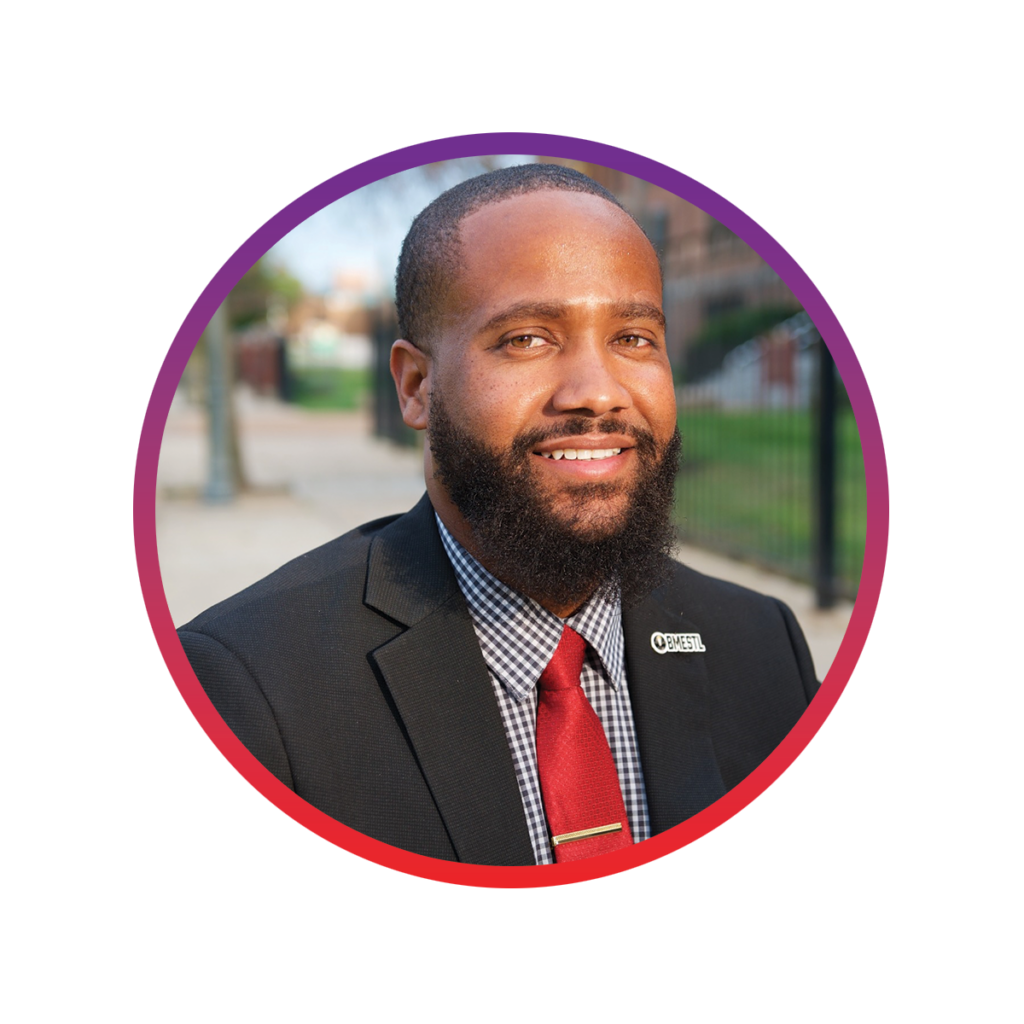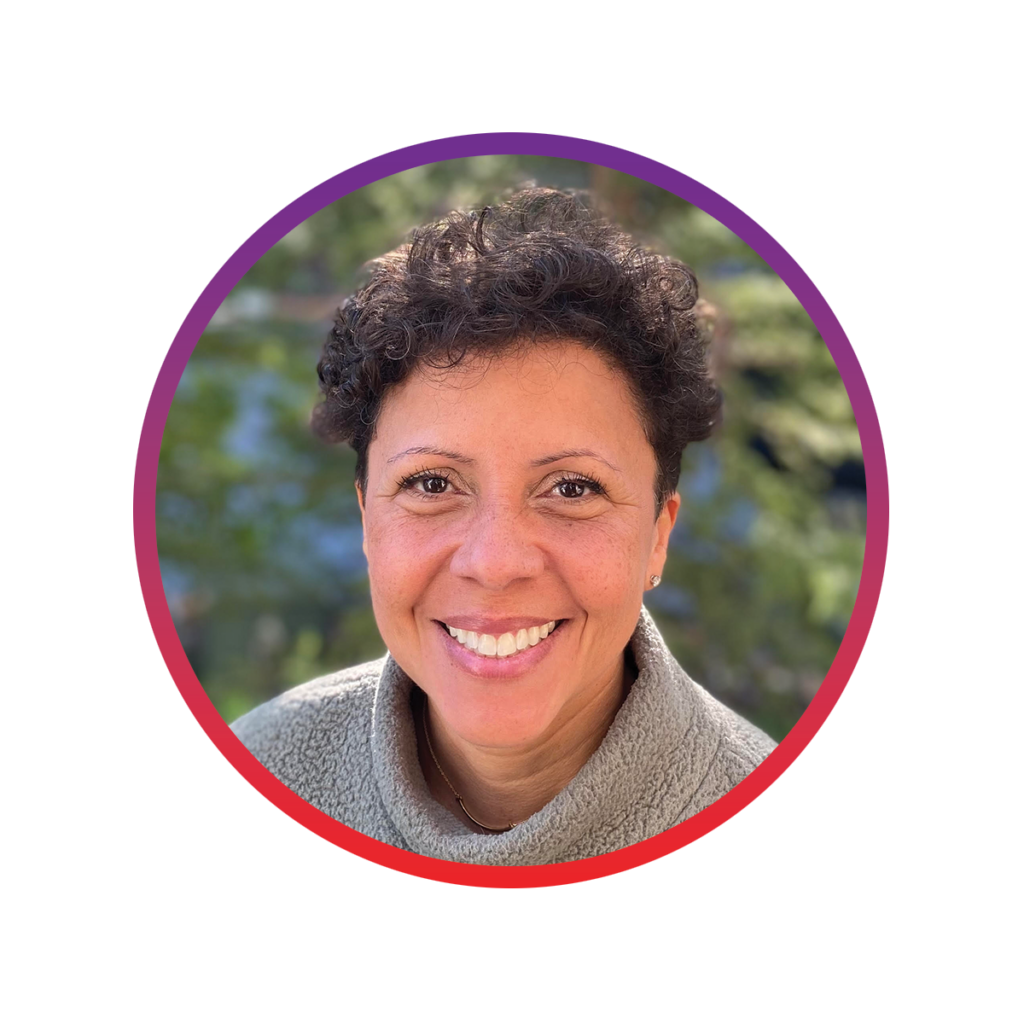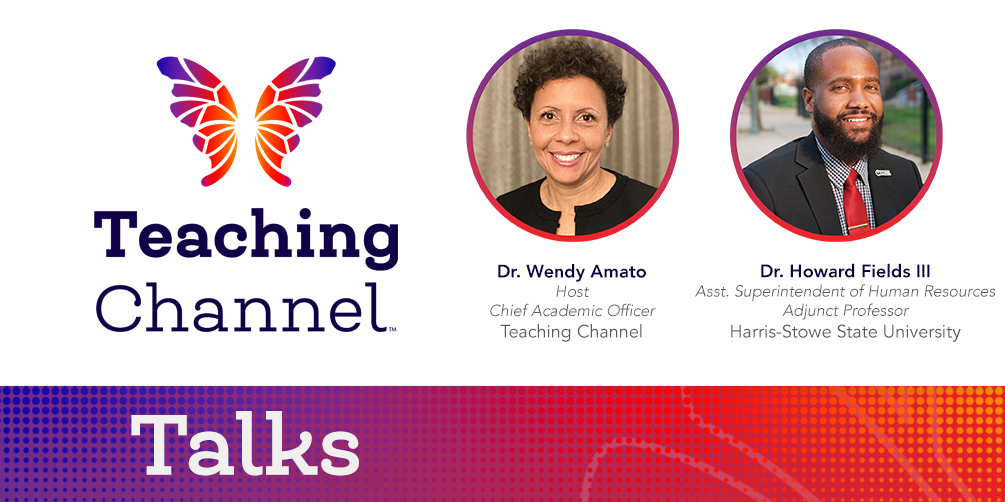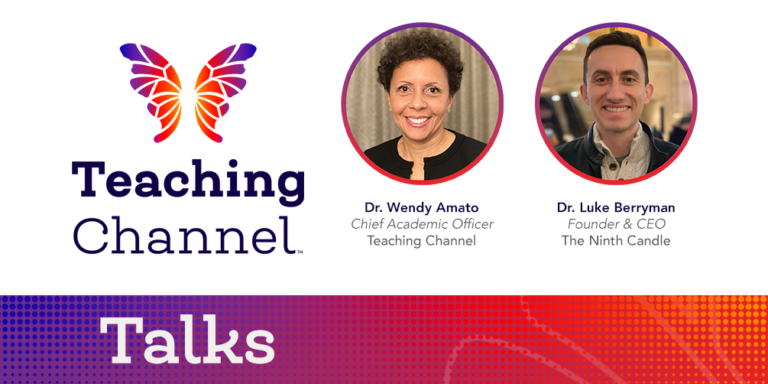In this compelling episode of Teaching Channel Talks, Dr. Wendy Amato hosts Dr. Howard Fields III, Assistant Superintendent of Human Resources and adjunct professor of education at Harris-Stowe State University. In this eye-opening exploration, Howard and Wendy examine challenges in educational equity, unravel the complexities of DEI efforts, and shed light on why a consensus that prioritizes comfort is a disservice to our students.
Our Guest

Dr. Howard Fields III currently holds the position of Assistant Superintendent of Human Resources and also serves as an Adjunct Professor. He is the author of two books: “How to Achieve Educational Equity” (2021) and “Transfers & Open Enrollment: The Denigration of Black School Communities” (2023). Additionally, he is a co-founder of Black Males in Education St. Louis (BMESTL), and has played a key role in establishing both EduOpenings.com and The State of Black Educators Symposium. Dr. Fields is recognized as an influential figure in education, known for his commitment to student-centered approaches with a focus on equity.
Connect with Dr. Fields | X | Facebook | Instagram | LinkedIn
Our Host

Dr. Wendy Amato is the Chief Academic Officer at Teaching Channel’s parent company, K12 Coalition. Wendy earned her Master’s in Education and Ph.D. in Curriculum and Instruction from the University of Virginia. She holds an MBA from James Madison University. Wendy began teaching in 1991, has served as a Middle School Administrator, and still teaches at UVA’s School of Education. She has delivered teacher professional development workshops and student leadership workshops in the US and internationally. Wendy and her family live near Charlottesville, Virginia.
Resources for Continued Learning
If you enjoyed this episode, you can learn more from Dr. Fields by visiting his website or listening to his mini-podcast, How to Achieve Educational Equity. He has also provided an Educational Equity Professional Learning Plan for our listeners working toward educational equity within their schools or organizations. In addition, Dr. Fields has authored two books focused on educational equity that are mentioned in this episode:
- Transfers & Open Enrollment: The Denigration of Black School Communities
- How to Achieve Educational Equity
In this episode, Wendy and Howard discuss his work developing and training an Educational Equity GPT. Watch a video to see this AI tool in action or test it for yourself.
Episode Transcript
Wendy Amato: Welcome to Teaching Channel Talks. I’m your host, Wendy Amato, and as often as I can, I jump into conversations about topics that matter in education. In this episode, Dr. Howard Fields and I want to talk about educational equity. Welcome Dr. Fields.
Howard Fields: Wendy, thank you so much for having me. It is a pleasure to be here and I’m really looking forward to our discussion.
Wendy Amato: I’m jumping right in with the tough question. I don’t want to be negative, but let’s talk about pitfalls and challenges. What’s going on? And do you have a love hate relationship with equity?
Howard Fields: Having a love hate relationship is how I would define educational equity right now. I think the love is always there.
There’s a lot of love. When we’re talking about any time we can create pathways or eliminate barriers for our students who historically have been the furthest away for justice to be successful, I think that’s going to be a positive thing and one could not have a hate piece in that regard. And so there’s love that’s there.
Many of the individuals that I know who are trying their best to ensure educational equity is occurring in school systems, organizations, nonprofit, they are some spectacular individuals. who do a fascinating job in their work. And so that is all leading to this love piece. But there is a hate piece as well.
And that is we have, in my opinion, in some instances, we have watered down educational equity in a lot of regard. We use these euphemisms when we don’t want to say words that have been politicize. And I think that does not do justice for what we’re trying to accomplish. If you’re trying to accomplish educational equity, then call it educational equity.
If you’re trying to establish a place where people feel belonging, which does have its place in education, then call it that. But to not use terms like equity, educational equity, diversity, inclusivity. Anti bias, anti racism to not use those terms, but to use the tenets or the principles in that regard. I think it does.
I think it, it has a negative impact on what we’re talking about and that students who are furthest away from justice. And so because of that in 2020, if you would have asked about educational equity out of, I’m still that way, right? I wrote the book how to achieve educational equity.
But at the same time, when I hear people start to say, equity, and they almost have a little certificate to say, Hey, I’m equitable. I don’t necessarily have evidence to support that has always led to the outcomes that we envision for our students. And so yes, I would say a love hate relationship on nevertheless.
Wendy Amato: You mentioned using terms properly and you have written the book on educational equity. Here it is among one of several of your publications. Talk to me a little bit about defining equity when you and I use the word here today. What do you want it to mean in our conversations and part of that is in your book where you articulate what it should be.
Howard Fields: If you’re not going to do anything else, you have to be clear. And as leaders, as stewards of learning, we have to be clear. And I want to be very clear, as well as intentional, when I say educational equity, this is what I mean. I mean creating, And or eliminating policies, systems and practices in schools that impact the experiences, the outcomes and access to resources for students from previously excluded groups.
And so I break that down into thirds right creating and or eliminating. We have enough equity theorists out there. And that’s no disrespect to anyone who theorize what equity is, but we need action specifically within the K 12 context, specifically within organizations. So you may have a belief system.
You may have a great definition, but if you’re not creating pathways for students to be successful, and if you are not eliminating barriers that get it in the way of student progress. You could be doing a lot of things, but you’re not engaged in educational equity as an action right now. The other piece that I’ll talk about is a focus on policy systems and practices, because.
That policy piece we have seen with equity that we will have an equitable professional development. We will have an equitable conversation. We may even have an equitable speaker, but if it’s not written down, if it’s not in the policies, if it’s not in the way that we do business and how we govern ourselves, it’s not going to stand the test of time.
And I think we have countless examples of that. When people began to beat up some of these terms and we throw our hands up and we’re like, nope. We’re going to do away with equity because say if folks are not happy, but also talk about this term that’s called students from previously excluded groups.
And I was intentional not to use underrepresented. The reason why–
Wendy Amato: let me interrupt to ask you to expand on the concept of. Previously underrepresented groups out. Just let’s zoom in on that phrase and what you mean.
Howard Fields: Yes, previously excluded groups. I intentionally did not use a term that we have come to use and that is underrepresented.
And Wendy, I did not use underrepresented because there’s no accountability and underrepresented. Let me give you an example as a sports person. If someone said Dr. Fields, I want you to create a sports team for X group. And I need at least 14 individuals from X group to be able to participate. I can go out, I can talk to people, I can say whatever.
And then when I come back to you, Wendy, I say, Hey, I tried to talk to X group. I couldn’t find them. And so they are underrepresented. There’s no accountability on me, even though I was tasked with finding said group, there’s no accountability. When we say previously excluded, to exclude someone as personal and to be part of either an organization or a team that excludes, that doesn’t feel well.
None of us want to be the ones who are excluding folks. Insidiously speaking, Educational organizations have excluded groups of students from success excluded groups of students from being successful, frankly excluded groups of students for thriving in the space, and when you bring in that students were previously excluded.
It brings in a different dynamic and it forces us to take ownership of those who are not at the table. So that’s the sole purpose of using the term previously excluded as opposed to underrepresented.
Wendy Amato: We could have a whole conversation about this, the shift in meaning when we say previously excluded groups, and that’s a really important distinction for us to make when you talk about access for people.
You’re very careful to distinguish access from comfort. Tell me more about those two concepts and how they change the behaviors in schools.
Howard Fields: Oh, my goodness. Education is still the best field in the world. I really do believe that the amount of intrinsic rewards you get seeing students seeing your colleagues do spectacular work it’s really fascinating.
However, at the same time, We all know individuals that will say, listen, I will do anything for my students, but change. We know organizations that say I will do anything for students except change. This notion of receiving consensus is problematic, and I didn’t write about that, and that’s something we can talk about.
All day, every day. In the political nature of education that we’re in right now, too many things are requiring consensus. And in order for you to achieve consensus people are going to have to be comfortable. And that is where the conflict of educational lies. You, educational equity lies. You mean to tell me you want me to be a little bit more conscious of what I’m doing to ensure a particular outcome is being met or to ensure a particular outcome is being met.
And let me be clear, when I say outcome, in this instance, I’m not referring to test scores or anything like that. Making sure we’re being intentional With what we’re doing for groups of students. Now, I’m willing to do all of that. But if you really want me to adjust my, my, my practices, or if you want me to really reflect on how I see these students, if you really want me to be very intentional with the verbiage that I’m using.
I may not sign up for that. And when I say that occurs, Wendy, you notice it only takes three, four, five, six people to feel that way, regardless of how the organization is built or regardless of how many individuals that are there for things to not happen. And so this notion of Making sure we are putting students in a position where they can have access.
The focus is on the student and it’s not based off the comfort of the organization. Dr. Mark Bedell, who was the former superintendent of Kansas city public schools, and he’s out on the East coast. Now we miss you, Dr. Bedell. I heard him talk before, not just when he was a superintendent of Kansas city public schools.
a former participant of the Howard University and AASA Urban Superintendents Academy, he said, we know what leadership entails, and we know what we need to do. However, we work hard to get into certain positions, and once we get into those positions, it becomes much more about maintaining our status and maintaining our role in said position, and not doing the work that we have been put in a place to be.
Now, I thought that was very interesting because when you think about it, We have a system by which making individuals comfortable. At the expense of kids is what we’re doing in a sense is educational neglect is what’s happening is educational neglect with a hug, quite frankly. And so that is the challenge and that is where some of the passion lies because every organization is perfectly positioned to get the results that they’re getting.
And I do believe that wholeheartedly I have countless examples of that.
Wendy Amato: I missed that gene that says I should stay comfortable and I’m happy to engage in uncomfortable conversations and push discussion. It is our responsibility if we claim to be educators. Ensuring that students get what they need.
Howard Fields: None of us want to have uncomfortable conversations. I don’t want to have uncomfortable conversation. However, if a barrier for my students getting what they need. Is my thinking and I have to unlearn some pieces and thus engage with uncomfortable conversations to give me some water.
Let me stretch a little bit. Let me stand up feed me with the room and then we have to engage in uncomfortable conversations, frankly.
Wendy Amato: Yeah, and it doesn’t end there. We worked through that. In order to take care of our students. That’s not the end goal. It’s just a pathway to get places. I hope people are listening to you.
I know that the National Association for Elementary School Principals recognizes your work and your messages. They named you a distinguished, a national distinguished principal in 2020 because you got your thoughts straight. On these issues that matter. So thank you for that distinction in your contribution to the education community.
Let me shift us to talk a little bit about some of your more recent work with a chatbot. I’d love to help people understand what you’ve done to train this new model, how you built it and what your objectives were. And maybe even weigh in Petri dish versus mirror for the chatbot.
Howard Fields: I think one of the evolving natures of not just my personal work or professional work is evolving in this field of education.
One of the smartest things I decided to do was to self publish. That had a amazing impact on me. I had a lot more flexibility. There was no pressure to acquiesce or assimilate to a particular narrative or a particular publishing company. I don’t have anything to put against publishing companies.
They are spectacular. But for me and the message that I was trying to convey, especially what, how to achieve educational equity, self publishing helped me. And in this instance, I started writing last year when open AI released chat GPT. And. I was writing, taking these notes about some of my concerns, quite frankly, with AI, and some of those have proven to be true, which is if you look or search for criticisms of artificial intelligence, they do reinforce racism, bias, and some of the pieces, even if you were to, for instance, let me be specific, if bot, hey, Create a picture of the best teacher in the world.
Create a picture of a successful person. Create someone who’s spectacular with this, and this. Nine times out of ten, those individuals won’t look like you and I.
Wendy Amato: Is this an input output thing?
Howard Fields: I think it’s an input output thing for sure because individuals do train these models. Now when you’re looking at, historically speaking, as well as the stats of individuals who are training models, Typically, they are not individuals from diverse backgrounds for the most part, specifically black in this instance.
And so what I find was that once I was being critical of artificial intelligence, I realized that what are you going to do about it, Howard? You can easily stand up here and write some of these things. What are you going to do about that? And that challenge, you can tell that there’s some tough conversations that happen within, between myself in terms of saying and doing and being this practitioner and also being a adjunct professor, you have to be practical.
And so what I did was I took all of that writing. Also took how to achieve educational equity, and I took the work that I created from a most recent book transfers and open enrollment, the denigration of black school communities. I put all of that into a model and I began to train it, and when you train a model.
It’s fascinating how you can. Control what’s being put out. And you can also stretch the person who put in the prompt. And so let me give you an actual example with all of the information and my research over the years and the book, because I self published, I had access to that. I didn’t have to go through a publishing company or anything to get access to my own intellectual property.
I had that. So when I was training this model, I was able to see what wow. If I ask this particular model, what is educational equity compared to my model, it’s much more actionable. So I was thinking that, hold on, this may be the next step in terms of making books and making texts practical. In this instance, diversity, equity, inclusion, anti bias, anti racism practices.
So that was there. Then because it’s a live and breathing model, I was able to check myself in some regards. So when you’re training a model, I may put in, send an email to Parents making them aware of X, Y, Z really, whatever X, Y, Z is. It started off and it may say something like dear moms and dads.
And I’m, I took a step back, hold on for a second. Do not make any assumptions on the dynamic of home. If you have this, you have that got it. Corrected. Boom. So when you magnify that over a span of different prompts, a different narrative begins to emerge. And once I saw that, Wendy, I said, oh my goodness.
I started off being critical of ai, but I think I have something here. And that’s when all of that emerged. I was working on the model and then open AI opened up their custom GPTs. I said, let me try it. And before you know it I’m HR in the morning and I’m a coder at night training models, because I believe that’s my contribution and removing another barrier from people reading a book and concepts that they have enjoyed and even responded to utilizing it to being in their pocket and being able to say, Hey, give me feedback on this email from a educational equity standpoint.
Give me feedback on this lesson. That I’m working with students, given my students are X, Y, and Z. Oftentimes, my experience is that it has to do with race. But in a lot of regards, it may not have to do with race. It’s something else. How do I put that information in? How can I be a little bit more inclusive, given different ability levels with my students?
How can I put myself in a situation where I am inclusive, now that we’re talking about religious holidays? All of those pieces are there and it becomes a practical Assistant for you to utilize leveraging years. And I can say a decade now, right? We used to hear people talking about, Hey, my goodness, I have a decade of experience.
No, I have a decade of actual research using use cases that I’m able to leverage out. And I’m excited about that.
Wendy Amato: We know that prompt engineering is an evolving career path moving forward. And as artificial intelligence is used increasingly in education, prompt engineering skills are going to be essential.
I love thinking about prefacing some of those prompts with that phrase. You’ve given us, give me feedback on, it invites a system with exponentially tremendous access to resources to help us. Check calendars, check language, think about cultural dynamics. It’s so efficient to help us better ourselves.
Howard Fields: And check ourselves as well, because even with the prompt engineering, there’s a prompt that’s called the tree of thought.
And what you can do is train a train of thought where you can have artificial intelligence, argue with each other or argue with yourself given different perspectives. And when we talk about learning tools, Wendy, that’s magnificent. Now that we’re about to get into the election season and all of that.
What if you could put in your position on something and ask for a difference of opinion using actual specific data to support or actual primary sources for you to be able to look at. That’s what it’s about. And I think that is a learning piece where I said it before, it’s so low level to say, Hey, write me a paper on X, Y, Z.
That’s low level as far as I’m concerned. Having said that, though, if you can utilize some of these tools, To make sure you’re able to be stronger in your discernment or be able to determine what’s propaganda or being able to determine what some of the things that you’re writing that show your bias.
That’s a powerful piece. And I think being able to leverage that for our students would be incredible for them.
Wendy Amato: One of the commitments that you make is distinguishing, just agreeing with a concept and actually applying it in our lived behaviors, particularly our professional behaviors in school environments, and you are walking the walk.
That’s it. That’s a moment of distinction right there. Thank you for sharing a conversation with me. This is, we could go deep and spend much more time. I want to get deep dives into all the books, but this is right where we need to be to help people understand the questions that you explore and the work that you do.
And so I’m hopeful that people will spend some time in the show notes, getting a little bit more information and understanding how to connect with you and experience what you have developed and arranged for the education community. Thank you, Dr. Fields.
Howard Fields: Thank you. I know you’re here to have conversations with me, but the work that you’re doing at the Teaching Channel and all of the influence you’ve had, I do want to thank you as well because it does not go unnoticed.
So thank you.
Wendy Amato: Thank you for that. To the education community, if you’d like to explore the topics that Dr. Fields and I discussed today, please do check out our show notes at teachingchannel. com slash podcast. Be sure to subscribe on whatever listening app you use. Help other educators find us. I’ll see you again soon for another episode.
Thanks for listening.







